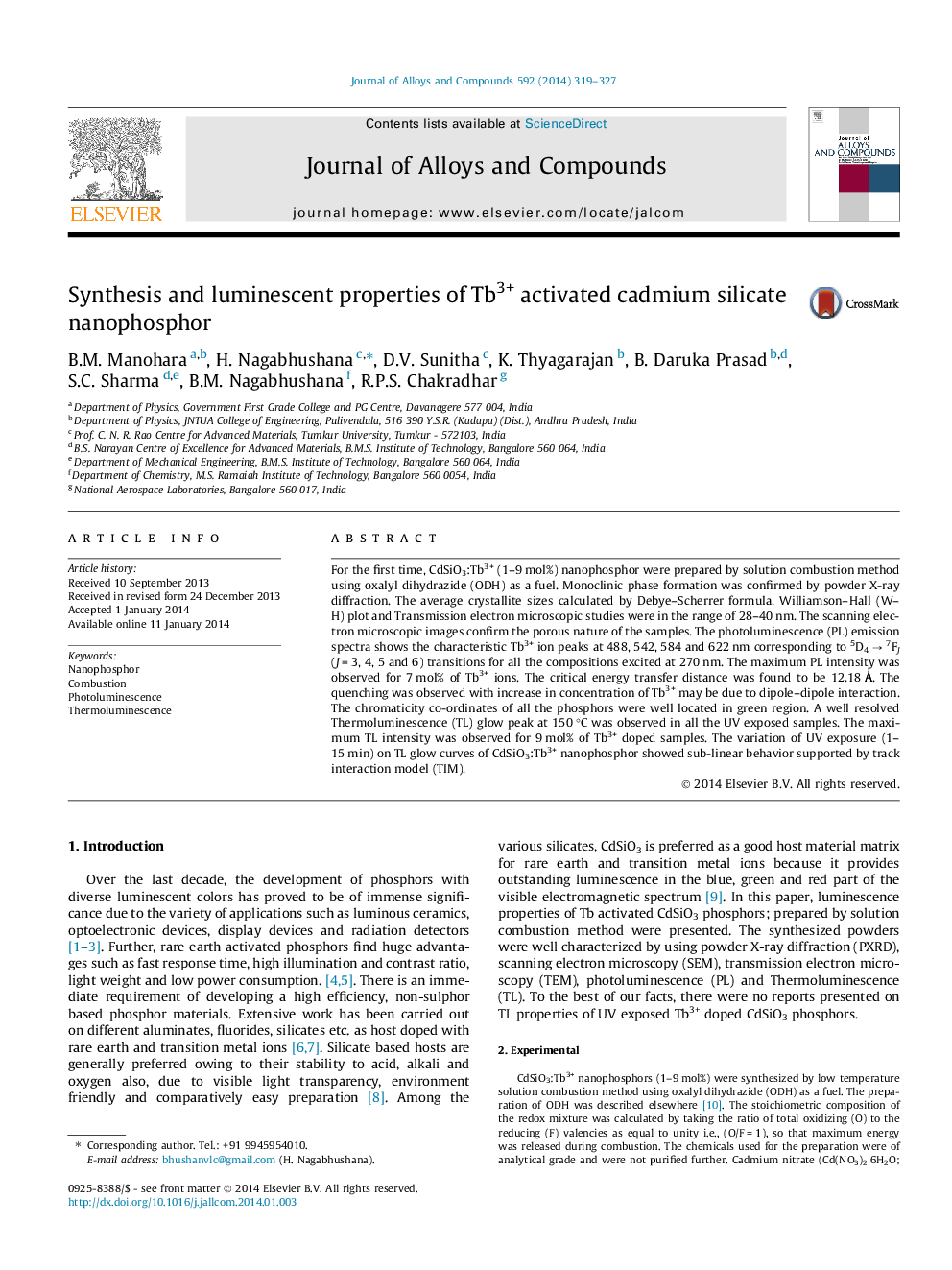| Article ID | Journal | Published Year | Pages | File Type |
|---|---|---|---|---|
| 1611406 | Journal of Alloys and Compounds | 2014 | 9 Pages |
•The CdSiO3:Tb3+ (1–9 mol%) phosphors prepared using low temperature combustion method.•XRD, SEM, TEM and FTIR techniques used to characterize the phosphor.•TL and PL properties were well studied.•The color purity has been verified by using the chromaticity diagram.
For the first time, CdSiO3:Tb3+ (1–9 mol%) nanophosphor were prepared by solution combustion method using oxalyl dihydrazide (ODH) as a fuel. Monoclinic phase formation was confirmed by powder X-ray diffraction. The average crystallite sizes calculated by Debye–Scherrer formula, Williamson–Hall (W–H) plot and Transmission electron microscopic studies were in the range of 28–40 nm. The scanning electron microscopic images confirm the porous nature of the samples. The photoluminescence (PL) emission spectra shows the characteristic Tb3+ ion peaks at 488, 542, 584 and 622 nm corresponding to 5D4 → 7FJ (J = 3, 4, 5 and 6) transitions for all the compositions excited at 270 nm. The maximum PL intensity was observed for 7 mol% of Tb3+ ions. The critical energy transfer distance was found to be 12.18 Ǻ. The quenching was observed with increase in concentration of Tb3+ may be due to dipole–dipole interaction. The chromaticity co-ordinates of all the phosphors were well located in green region. A well resolved Thermoluminescence (TL) glow peak at 150 °C was observed in all the UV exposed samples. The maximum TL intensity was observed for 9 mol% of Tb3+ doped samples. The variation of UV exposure (1–15 min) on TL glow curves of CdSiO3:Tb3+ nanophosphor showed sub-linear behavior supported by track interaction model (TIM).
Graphical abstractFigure optionsDownload full-size imageDownload as PowerPoint slide
